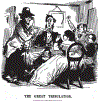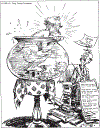"It's None of Their Damn Business": Privacy and Disclosure Control in the U.S. Census, 1790-2020
- PMID: 37928237
- PMCID: PMC10621322
- DOI: 10.1111/padr.12580
"It's None of Their Damn Business": Privacy and Disclosure Control in the U.S. Census, 1790-2020
Abstract
The U.S. Census has grappled with public concerns about privacy since the first enumeration in 1790. Beginning in the mid-nineteenth century, census officials began responding to concerns about privacy with promises of confidentiality. In recent years, escalating concerns about confidentiality have threatened to reduce the usability of publicly accessible population data. This paper traces the history of privacy and disclosure control since 1790. We argue that controlling public access to census information has never been an effective response to public concerns about government intrusion. We conclude that the Census Bureau should weigh the costs of curtailing access to reliable data against realistic measures of the benefit of new approaches to disclosure control.
Figures



Similar articles
-
The shortcomings of synthetic census microdata.Proc Natl Acad Sci U S A. 2025 Mar 18;122(11):e2424655122. doi: 10.1073/pnas.2424655122. Epub 2025 Mar 6. Proc Natl Acad Sci U S A. 2025. PMID: 40048290
-
Balancing data privacy and usability in the federal statistical system.Proc Natl Acad Sci U S A. 2022 Aug 2;119(31):e2104906119. doi: 10.1073/pnas.2104906119. Epub 2022 Jul 25. Proc Natl Acad Sci U S A. 2022. PMID: 35878030 Free PMC article.
-
An in-depth examination of requirements for disclosure risk assessment.Proc Natl Acad Sci U S A. 2023 Oct 24;120(43):e2220558120. doi: 10.1073/pnas.2220558120. Epub 2023 Oct 13. Proc Natl Acad Sci U S A. 2023. PMID: 37831744 Free PMC article.
-
Towards an integration of individualistic, networked, and institutional approaches to online disclosure and privacy in a networked ecology.Curr Opin Psychol. 2020 Dec;36:118-123. doi: 10.1016/j.copsyc.2020.05.004. Epub 2020 May 26. Curr Opin Psychol. 2020. PMID: 32604066 Review.
-
Quo vadis, data privacy?Ann N Y Acad Sci. 2012 Jul;1260:45-54. doi: 10.1111/j.1749-6632.2012.06630.x. Ann N Y Acad Sci. 2012. PMID: 22809458 Review.
Cited by
-
When Privacy Protection Goes Wrong: How and Why the 2020 Census Confidentiality Program Failed.J Econ Perspect. 2024 Spring;38(2):201-226. doi: 10.1257/jep.38.2.201. J Econ Perspect. 2024. PMID: 40099219 Free PMC article. No abstract available.
-
The shortcomings of synthetic census microdata.Proc Natl Acad Sci U S A. 2025 Mar 18;122(11):e2424655122. doi: 10.1073/pnas.2424655122. Epub 2025 Mar 6. Proc Natl Acad Sci U S A. 2025. PMID: 40048290
References
-
- Adams John Quincy. 1828. “Fourth Annual Message to Congress.” Accessed December 2, 2022. https://www.presidency.ucsb.edu/documents/fourth-annual-message-2
-
- Abraham Katherine G., Haskins R, Glied S, Groves RM, Hahn R, Hoynes H. and Wallin KR, 2018. The Promise of Evidence-Based Policymaking: Report of the Commission on Evidence-Based Policymaking. Washington, DC: Commission on Evidence-Based Policymaking.
-
- “All the Privacy of a Gold Fish.” 1940. Minneapolis-Star Ledger. February 25, 1940, 10.
-
- Allen Robert S. and Paul Scot. 1966. “Data Center Plan Called Privacy Invasion,” The Lewiston Daily Sun Journal. June 14, 1966, 4.
Grants and funding
LinkOut - more resources
Full Text Sources
